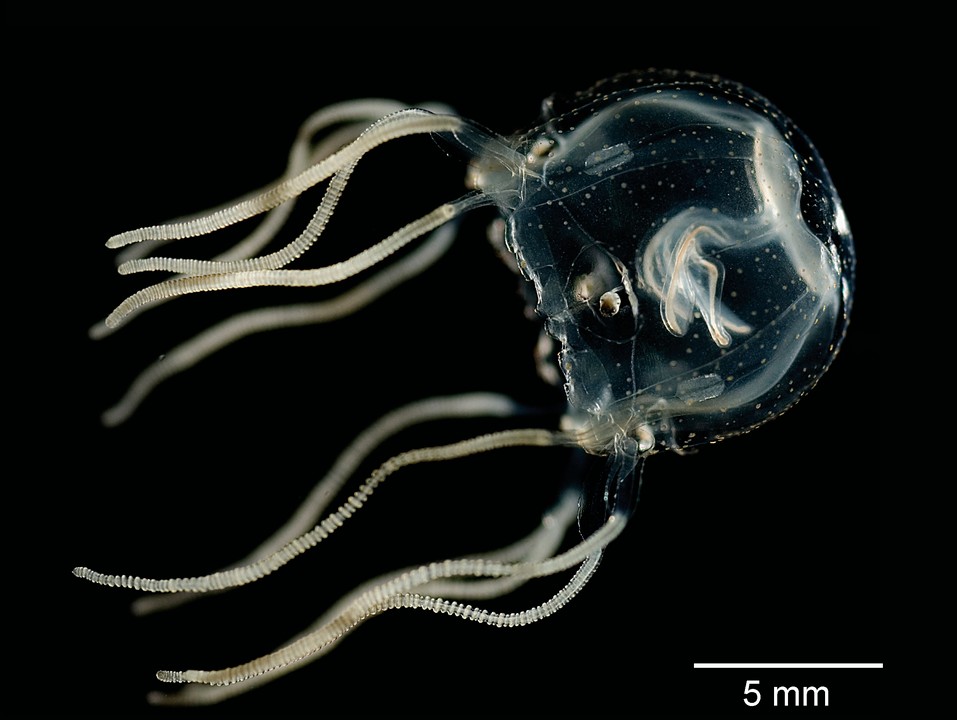Today we’re learning about new research on learning that shows the way living things learn is more complicated than we thought.
In fact, you can learn even if you don’t have a brain!
Interesting Engineering just reported on research by a European team on the Caribbean box jellyfish and what’s known as associative learning.
Lots of creatures learn this way.
A human touches a hot stove and gets burned, for example, that person knows not to touch the hot stove again.
Or, say, if a cat shows up at the neighbor’s house and gets food, they’re probably going to drop by that neighbor’s house again expecting a meal.
The study put the jellyfish into a kind of obstacle course and found that, over time, they figured out how to avoid the obstacles and move through the tank more quickly.
That sounds pretty much in line with the associated learning that humans and cats and other creatures do, except that, unlike most humans and cats, these jellyfish don’t have brains.
Their nervous systems aren’t centralized the way ours are.
But being brainless doesn’t mean they’re completely, um, brainless.
The jellyfish do have neurons that are concentrated around their 24 eyes.
And it appears that they used that dispersed central nervous system to more or less “think” their way through the obstacles.
This finding is kind of a big deal, because advanced learning was only supposed to be possible for creatures that had the most advanced nervous systems.
We’re going to need some serious brain power to figure out how these creatures without brain power learned so much.
We have a new record holder for the world’s longest mullet!
Tami Manis of Knoxville grew her mullet out to 68 inches; she says it’s longer than she is tall.
It’s also chronologically long; she said the reason she started growing a mullet decades ago was, and I quote, “it was the 80s.”
Brainless jellyfish show they can learn from past experience (Interesting Engineering)
I Have The World’s Longest Mullet! (Guinness World Records via YouTube)
Let’s put our brains together and support this podcast on Patreon
Photo by Jan Bielecki, Alexander K. Zaharoff, Nicole Y. Leung, Anders Garm, Todd H. Oakley (edited by Ruthven (talk)) – Jan Bielecki; Alexander K. Zaharoff, Nicole Y. Leung, Anders Garm, Todd H. Oakley (June 2014). "Ocular and Extraocular Expression of Opsins in the Rhopalium of Tripedalia cystophora (Cnidaria: Cubozoa)". PLOS ONE 9 (6). DOI:10.1371/journal.pone.0098870., CC BY-SA 4.0, via Wikicommons

